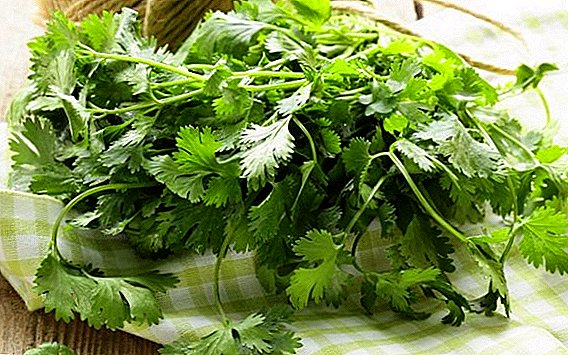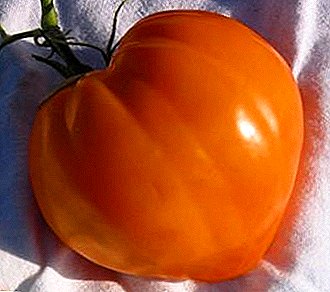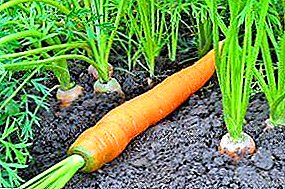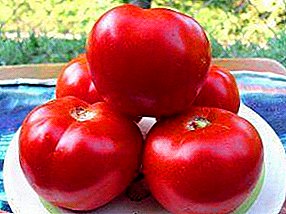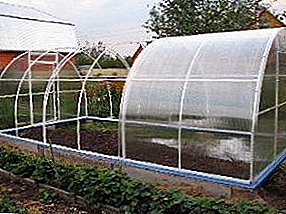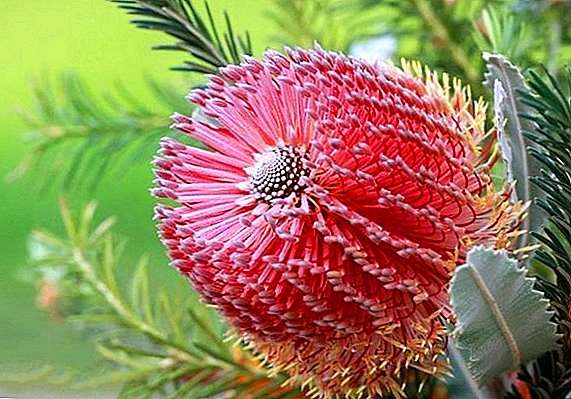 There are many different types of viburnum, although we traditionally present this plant as a low shrub with scarlet clusters of berries. In fact, the color of the berries is not always red, and the height of the shrub may vary depending on the species. Particularly noteworthy is the viburnum, also known as black viburnum, an excellent ornamental plant, which is often used for landscaping and garden decoration.
There are many different types of viburnum, although we traditionally present this plant as a low shrub with scarlet clusters of berries. In fact, the color of the berries is not always red, and the height of the shrub may vary depending on the species. Particularly noteworthy is the viburnum, also known as black viburnum, an excellent ornamental plant, which is often used for landscaping and garden decoration.
Botanical characteristic
Pride ordinary belongs to deciduous shrubs of the Adox family. Mainly used in landscape design, although the berries are edible. However, in industrial horticulture is practically not used, since the ripening period of berries is very long, and they ripen at the same time.
Today there are a large number of species of viburnum. View the most popular types of it.

Black viburnum is the owner of an overgrown powerful root system, which is why it is often planted on the slopes of the banks and ravines to prevent soil movement.
Pride grows on a rich lime soil, feels good both in open areas and in a wooded area. Most common in natural conditions in Central Europe. It also grows in southern Europe. The border of its range in the east stretches to the Caucasus, Ukraine and Asia Minor. From the northern side affects the southern regions of England. Occasionally can be found in some southern regions of Africa, namely in Morocco and Algeria.
Did you know? The name of viburnum in Russian comes from the word "red-hot". In the vision of our ancestors, the rapidly glowing berries seemed to glow in the sun, and therefore they blushed.

Bush
The bush of black viburnum is quite tall, sometimes looks like a tree, it reaches a height of about 6 meters. The crown is thick, with a diameter of up to 3-4 meters, but it looks very neat, since all the branches and leaflets compactly adjoin each other, because of which viburnum has a lush and dense "cap".
The leaves of the plant are dark green, slightly wrinkled and oblong-oval, can grow large and reach 18 centimeters in length, rather dense and wide.
All branches, shoots and leaves are covered with thick white fibers, because of which the bush seems fluffy. It is because of this that pride is sometimes called a "flour" or a shaggy shrub. 
The color of the bark is often grayish. After the tree reaches the age of three, the bark begins to crack.
Berries
The berries are small, tightly attached to the brush and formed into oval clusters. After the inflorescences have fallen, green berries appear in their place, which, as they mature, first turn red and then turn black.
Kalina is a unique plant of its kind, its beneficial properties are practically unparalleled.Fully ripened fruits have a rich black color. They are slightly shriveled, but rather juicy and sweet. But the red berries are unripe, they are sour and tart in taste, and are not eaten.

Did you know? Juice from the berries of black viburnum in ancient times was used for the manufacture of ink.
Characteristics of a flowering tree
Kalina gordovina does not belong to fast-growing plants, because in a year it adds only 30 centimeters in height. However, the life span of a plant is long - about 60 years.
Compact dense crown, oval beautiful leaves, which do not lose their attractiveness neither in summer nor in autumn, endow the plant with excellent aesthetic characteristics. 
During the flowering period, which falls on the beginning of the summer season, viburnum becomes like a bride - large inflorescences, umbrellas of whitish-cream, "festive" shade bloom in its crown. The flowering period lasts from 2 to 4 weeks, after which the flowers fall off, and in their place there are brushes with lettuce-green berries. Since the period of ripening berries in Gordovina is very stretched and they all ripen at different times, the brushes look multi-colored, red-black.
Kalina pride is a rather unpretentious ornamental plant, which well strengthens the soil prone to erosion. In addition, it is resistant to both frost and drought. It survives well in urban areas, is not afraid of gas pollution of the air and can even grow in the shade. Among other things, black viburnum is rarely sick, resistant to viburnum leaf beetles. 
Where best grows viburnum
Pride refers to unpretentious plants. It tolerates temperature drops and does not require special care. Plant a plant can be one by one or in groups. It combines well with other leafy plants. Suitable for landscape compositions and even for the formation of hedges.
Light requirements
For lighting black viburnum is not demanding. It is able to grow in shade, partial shade, and in open, sunlit areas.
Despite the fact that shrub-tolerant shrubs, growing in open areas in abundance of sunlight will allow its beauty to fully reveal. 
Soil requirements
Although pride is a drought-resistant plant, it still grows much faster with abundant soil moisture. Black viburnum itself feels best on chernozems and silty-loamy moistened soils with neutral or weak acidity, although it can grow on saline soil. But on the peat, sand and podzolic soils, the plant feels bad.
Important! Although the viburnum gorda is capable of growing in any conditions and on any soil, yet with the constant treatment of suitable soil, fertilization, regular moderate moisture of the earth and with free access of sunlight, it will bloom and bear fruit especially densely.

Rules and terms of landing
Planted viburnum gordovinu in the ground in the autumn or spring. If the place is chosen in the shade, then it is desirable that the land was fertile here, then it will not greatly affect the quality of flowering and fruiting. The variegated varieties are best planted in open sunlight areas of the garden, then the whole range of colors can manifest as much as possible.
When is the best time to plant a pride of ordinary
Planting urban towns can be carried out in the spring, before the appearance of the leaves, and in the fall, in the period of leaf fall and before the first frost. Planting in spring and autumn is no different, except that if the seeds of the plant are planted before winter, the first sprouts will hatch only in August, and the sleeping bud will open only next spring. 
Seedling planting scheme
To pride ordinary pleased with a dense crown and abundant flowering, when planting seedlings in the ground adhere to the following scheme:
- in the period favorable for planting (autumn or spring), choose a place for the future bush, and about a month before planting add fertilizer containing potassium and phosphorus to the soil, you can add peat;
- prepare a landing hole, based on the size: 40 cm deep and about 50-60 cm in diameter;
- calculate that the distance between the plants is at least 1.2-2 m;
- prepare a soil mixture (organic soil from humus and peat, 3 tablespoons of urea, 1 cup of wood ash);
- add some soil mixture to the bottom of the planting pit;
- immerse the shrub in the hole so that the root neck is not more than 5 centimeters deep;
- fill the pit with the rest of the prepared soil mixture, while gently compacting it;
- make the first watering, which should be abundant and be at least 3 buckets of water. You can dig a hole near the planting site, into which you need to pour water;
- after the water is well absorbed, and the soil has settled a little, the stem should be mulched. Peat or sawdust is quite suitable for this. The mulch layer should be fairly thick, at least 10 centimeters.
 Planting viburnum gordoviny
Planting viburnum gordovinyIn this process of planting ends and begins a long period of growth of the shrub.
How to care for viburnum
For vigorous growth and a beautiful appearance, Kalina should regularly water, feed and loosen the ground for better access of oxygen to the roots. Approximately three years after planting, the layer of mulch that was laid first is removed from the circle of the trunk, the ground is carefully loosened and covered with a new layer of mulch.
Do I need watering
If the plant is used for decorative purposes and there is a need for an attractive appearance, watering is needed, as this bush likes moist soil. 
At a minimum, watering is obligatory until the moment when pride takes root. It is best to water young viburnum in the evening, making sure that the moisture goes into the ground at least 40 cm.
In the future, you can water an adult shrub once a week. It is especially important to adhere to such a regime during the growing season and during the ripening of the berries.
Important! Watering should be carried out in pristvolny circle, irrigation crown is not necessary.

How to feed a shrub
For wild growth and fruiting, viburnum can be fertilized twice a year (in spring and autumn) with mineral fertilizers or once a year with organic fertilizers.
In the first case, in the spring, fertilizers containing phosphorus, potassium and nitrogen are applied to the near-stem circle. In the autumn you can make the same fertilizer, but without nitrogen.
But if fertilized with organic fertilizer from rotted manure, then it is best to make it in the fall while digging the soil, and manure can be enriched with phosphorus and potassium. 
Also in the spring, even before the first greenery appears, urea can be added to the soil (2 tbsp.), And before the flowers appear, potassium sulphide (2 tbsp.).
We recommend to learn the best tips for the care and landing of Viburnum Buldenezh.
Proper pruning shoots gordoviny
Pruning of this species of viburnum is carried out exclusively in early spring, before the buds bud. At this time, the old, dry and diseased branches are completely removed.
For the formation of a beautiful and dense crown branches that are longer than 30-40 cm, simply pinch hands on the ends.
If it is necessary to form a pride in the form of a tree, then in the second year after planting, all side branches are removed, leaving only the central trunk. Each year new shoots and new shoots will appear on it. They must be removed, can be used for reproduction. 
In order for the crown to be thick, the growth point must be pinned.
Rejuvenation of the plant is held about once every 6-10 years, when almost all the branches are completely cut off, there are less than a dozen of the best branches.
If viburnum weakened with time, it can be revived to life, cutting off a stump at a distance of 30 centimeters from the ground. In this case, the sleeping buds will wake up, and a new young plant will grow.
Disease and pest treatment
Kalina gordovina - a plant very resistant to various diseases and pests that other varieties of viburnum are susceptible to. But still some pests are capable of causing damage to it. It may be a mole mole, aphid, or a scab of a comma. Of the diseases gordovina can suffer spotting and powdery mildew. 
With the defeat of pests or for the prevention of a shrub treated with insecticides. Karbofos is best suited for fighting the shield, and a trichogram is the best option for getting rid of aphids.
In some cases, pride ordinary, like any other type of viburnum, can affect viburnum leaf beetle. Of course, black viburnum is much more resistant to this pest, but sometimes precedents occur. In this case, the shoots must be treated with 0.2% chlorophos.
If the plant is affected by spotting and powdery mildew, the treatment with fungicides will help. But for the prevention of diseases, it is desirable to treat Kalina with infusions of garlic, onion or tobacco.  Infusion of garlic
Infusion of garlic
Did you know? Kalina is unique in that it is the only plant whose bone has a heart shape.
How to propagate Kalina gordovinu
Propagation of viburnum gordovina possible in several ways: offspring, dividing the bush, seeds and cuttings.
Offshoots
Reproduction by offspring (layering) occurs in the spring. To do this, shoots of coppice bend down to the ground and buried in oblong pre-dug shallow grooves, the length of which is approximately 10-15 cm.
By the onset of autumn, the offspring will already have time to plant the root system and root well, after which they can be carefully transplanted.  Viburnum reproduction by layering
Viburnum reproduction by layering
Dividing bush
This type of reproduction is possible only if the bush is young. In this case, the plant should not be formed in the form of a tree, you need to leave shoots to separate. For example, low-lying branches can be pinned to the soil and fixed in this position with the help of a fork. Then you should sprinkle them on the ground, provide a little shade and often water it. Ensure that there are at least 3 renewal buds on each separated plant.
Next year the results will already be visible. And after 3 years, the first fruits will appear.
Reproduction in this way can be done both in spring and in autumn. 
Did you know? Viburnum fruits are used to make marmalade. This is possible because viburnum contains a lot of pectin. -substances with astringent characteristics.
Seeds
In viburnum gordovina quite high germination of seeds - 80%. However, with such a reproduction is not worth waiting for quick results. After landing, the root develops first. Ground stalk will appear only next year. The first couple of years the plant will develop very slowly, but then faster.
When choosing such a method of reproduction, the seeds are stratified to begin with. Within 6-7 months they must be kept in the refrigerator. At the same time, in order to ensure high germination, it is desirable to conduct a double stratification - the first 3 months to keep the seeds at a temperature within + 18 ... +20 degrees, and the remaining 3-4 months - at a temperature of from -3 to +5 degrees.  Viburnum seeds
Viburnum seeds
After stratification, seeds are sown in the soil, and the planting depth should not exceed 3 cm.
Since the young sprout will not appear soon, it is best to designate the place chosen for planting as the best choice for planting. The soil here needs to be kept wet, and in winter it should be covered with a layer of peat or leaves.
Experienced gardeners are advised to learn how to propagate viburnum.Planting seeds can be carried out either in early spring or towards the end of October.
Cuttings
Cut cuttings carried out in the summer, it is best at the turn of June and July. The cuttings should be about 10 centimeters long, and each should have two buds.  Viburnum propagation by cuttings The uppermost leaves are cut in half, and the lower ones are removed completely. Moreover, the upper cut should be straight, and the lower - oblique.
Viburnum propagation by cuttings The uppermost leaves are cut in half, and the lower ones are removed completely. Moreover, the upper cut should be straight, and the lower - oblique.
After the done manipulations, the cuttings ready for reproduction must be put in water diluted with a growth stimulator (for example, "Korniy"). After the shoots will take the first roots, they can be planted in the greenhouse or hothouse.
The soil must be well drained and fairly loose. For this you can, for example, mix peat and sand in equal parts. 
And, of course, temperature is very important. It is best to germinate plants at a temperature ranging from +22 to +25 degrees.
Important! The lower the temperature in the greenhouse, the worse the stem of the snowdrop tree will root.Also, the greenhouse should be regularly ventilated, but it should not allow drafts and overcooling of plants. Watering should be regular, and the soil moist.

Does the shrub need special care when preparing for winter?
Kalina gordovina tolerates the winter cold very well, so she does not need any special preparation for the cold season. The only thing that can be done in anticipation of the cold weather is to check the layer of mulch in the prestle circle. It should be at least 5-7 centimeters. If the thickness is already less, then you can add peat or deciduous humus.
Consider in more detail how to grow viburnum on your site.Kalina pride - a beautiful ornamental plant that will become a real decoration for the garden. Moreover, this plant is not difficult to grow and multiply. Pride ordinary completely unpretentious to the conditions of growth, but in good soil and with the availability of abundant solar lighting blooms and bears fruit especially thick and beautiful.
Feedback from users of the network about Kalina gordovin
In Moscow, the height of 40-year-old plants is 5.6 m, the diameter of the crown is 3.5 m. The shoots, leaves and twigs of the inflorescences are abundantly covered with white hairs in the form of asterisks, for which the plant is sometimes called "flour". Ovate-oval wrinkled leaves up to 18 cm long are very beautiful. They are dense to the touch, wide, dark green above, gray-felt below. В июне распускаются многочисленные кремово-белые щитковидные соцветия, состоящие из одинаковых цветков.The diameter of a single flower is about 1.5 cm. It blooms in May - June. Duration of flowering 15 - 25 days. From each flower then the fruit is formed. During the ripening of the fruits the gorda is especially beautiful. At first, all the fruits are red, shiny, then they turn black, but not all at once. Until all the berries have ripened, there are both red and black berries at the same time. Fully fruits ripen in September, decorate the plant over 20 days.
It has decorative forms: variegated (f variegata) - with yellow variegated leaves; wrinkled (f. rugosa) - with larger inflorescences and large, more wrinkled leaves.




